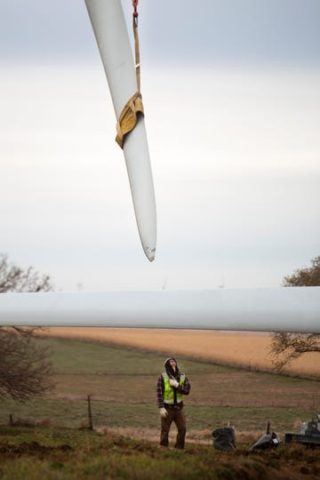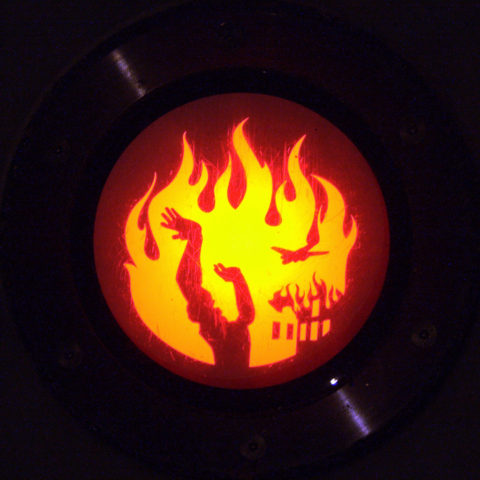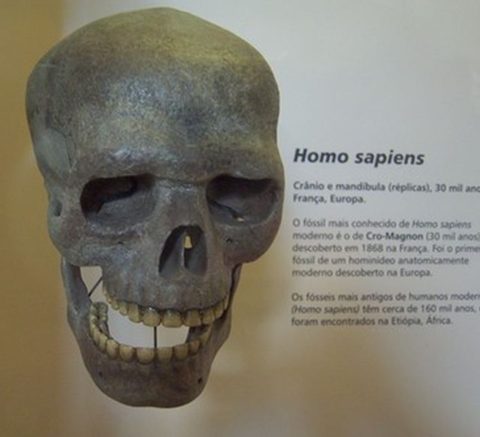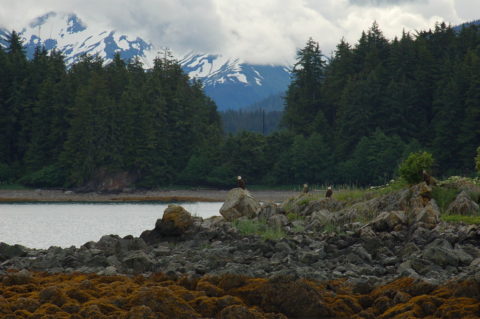Podcast: Play in new window | Download
Subscribe:

Mr. Damocles, please go to the nearest courtesy phone. We found your sword. (Des Moines Register photo)
The reason that industrialism kills whatever industrialism touches is that it has only one answer to every question, one solution for every problem: scale it up! Get big or get out! But as I and many others have been pointing out for years, the economies of scale sought by industries are always accompanied by a dark twin: concentration of risk. The bigger the manufacturing plant, the lower its unit costs of production, but also the greater the pollution emitted, the denser the traffic generated in a small area, etcetera. The other thing to remember about these penalties of industrialism if that many of them are deferred. By the time the full effect of the pollution is felt, the owners of the factory have grown rich, sold out and retired.
This is what is now happening to the wind-generation industry. The first of the giant wind turbines erected are reaching the end of their service life — much sooner than anticipated — and it turns out, nobody worked up a plan for that. The school-bus sized nacelles and generators can be refurbished or their steel recycled, but the vanes are another matter. They are too big to die.
The blades have been increasing in size since the first of them went up circa 1985, but to pick a median size, a 200-foot blade contains nearly 19 tons of epoxy, fiberglass, PVC foam, wood fiber and other stuff. That’s almost 60 tons of stuff (per turbine) that can’t be crushed or recycled or composted. So what do you do with it? Take it to your friendly neighborhood landfill.
If this strikes you as a small problem, let it strike you again. First of all, the blades were expected to outlast the turbines, which were expected to last at least 20 years. But the units are barely making 15 years, the blades failing because of manufacturing defects (mostly), lightning strikes, and unusual local wind conditions. So they have to come down. Continue reading →
 Dear Bernie:
Dear Bernie:

 In this country, no one is above the lexicon laws. And I say what the laws are. Well. On this blog, anyway. And I have decreed some new lexicon laws for 2020. They apply to anyone who discusses politics henceforth, and all fines are tripled for those who get paid to talk politics on cable TV — now about one quarter of the adult population.
In this country, no one is above the lexicon laws. And I say what the laws are. Well. On this blog, anyway. And I have decreed some new lexicon laws for 2020. They apply to anyone who discusses politics henceforth, and all fines are tripled for those who get paid to talk politics on cable TV — now about one quarter of the adult population.  The murder of another human being is forbidden by every religion and outlawed by just about every civilization in the history of the world. “Thou shalt not kill” is supposed to be non-negotiable. Of course we’ve been negotiating it forever.
The murder of another human being is forbidden by every religion and outlawed by just about every civilization in the history of the world. “Thou shalt not kill” is supposed to be non-negotiable. Of course we’ve been negotiating it forever.



